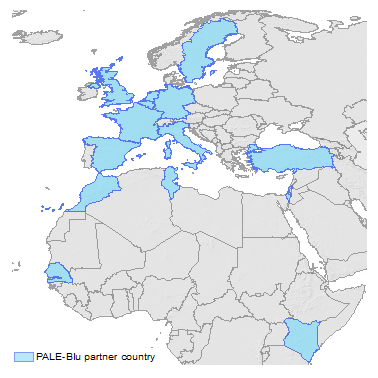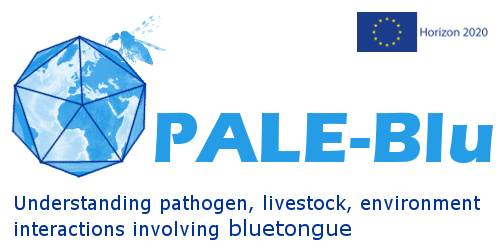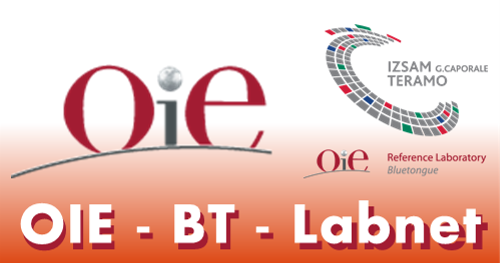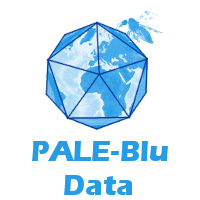Attention:
The palebludata.com website has been discontinued. A summarised replacement site is being prepared. In the meantime, much of the data has been updated and can be found on the project MOOD platform and MOOD Geonetwork.
October 2023 - Bluetongue in Increasing in Europe
A major outbreak of Bluetongue Virus Serotype 3 is currently in progress in Northern Europe, and a new strain of BTV-8 appears in Southern France
The following links may be of interest
1. UK Defra updated Assessment.
2. Fièvre Catarrhale Ovine sérotype 8 : point de situation épidémiologique - GDS France.
3. Farmers urged to stay vigilant: link to the attached document
The PALE-Blu Project
Welcome to the PALE-Blu website. The Project is now finished but this site will be maintained until the end of 2024.
The PALE-Blu project brings together leading laboratories in Europe with established track records working on the epidemiology, modelling, vaccinology, diagnostic systems, vector biology, pathogenesis, transmission, and control of Bluetongue virus (BTV) outbreaks, together with established institutes in several other countries that represent a potential ‘source’ of the BTV strains that continue to invade Europe.
PALE-Blu is an EU Horizon 2020 funded project formed of 19 partners over 15 countries and runs from 2017 - November 2020. Please note that the project websites will be maintained for ‘at least a year beyond the project end date.
Bluetongue virus is one of the most important livestock pathogens, capable of infecting all domesticated and wild ruminant species, causing severe clinical disease (fatalities) primarily in sheep and some deer species, but with reduced productivity in other ruminant species (e.g. cattle). The virus is transmitted by Culicoides biting midges and was previously confined to tropical and sub-tropical regions but is now endemic in several Southern European countries.
The PALE-Blu project dissects the interplay between the Bluetongue virus, its ruminant hosts, insect vectors, and the environment. The project partners utilise new and existing methods to explore the molecular epidemiology of BTV strains circulating in Europe and related source regions (including Northern, Western, and sub-Saharan Africa, the Middle East, and Turkey).
Learn more about the Bluetongue Virus here...
This video has been realised by the EU Horizon 2020 project “PALE-Blu - Understanding pathogens, livestock environment, interactions involving bluetongue”, under grant agreement No 727393.




